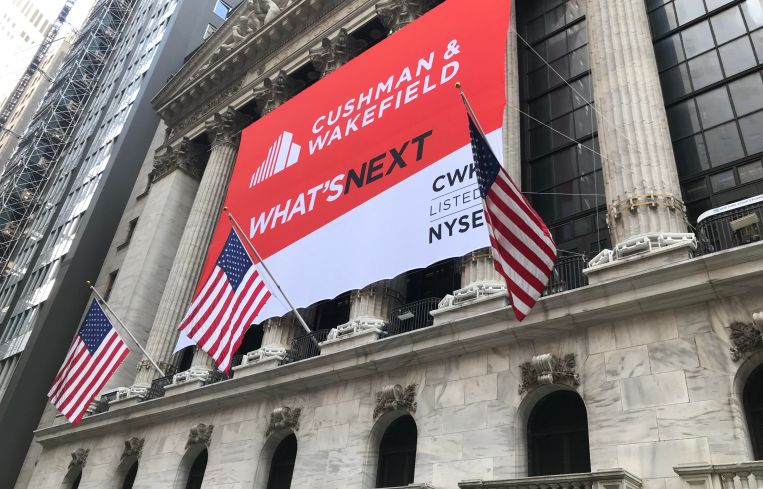Cushman & Wakefield Gains 5 Percent in First Day of Trading
Company President John Forrester attributed recent losses to merger costs
By Matt Grossman August 2, 2018 5:08 pm
reprints
Cushman & Wakefield closed its first day of public ownership as a winner, gaining 5 percent to $17.88 from its $17 debut. The company, now trading on the New York Stock Exchange under the ticker symbol CWK, sold 45 million shares for $765 million in one of 2018’s largest initial public offerings to date, as Commercial Observer reported this morning.
The banks that underwrote the deal, which include J.P Morgan Chase, Morgan Stanley, UBS and Goldman Sachs, have an option to purchase up to 6.8 million additional shares for $114.8 million—$17 per share—over the next 30 days.
Despite revenues of nearly $7 billion last year, C&W posted net losses in each of the last two full years and has lost money thus far in 2018 as well. But according to the company’s president, John Forrester, those red-ink results merely reflect expenses related to C&W’s 2015 merger with DTZ and Cassidy Turley, and don’t portend future problems.
“The losses were simply the investments we made in the integration. What you saw were all the investments made in the company to bring our teams together. That’s all now completely washed through,” Forrester told CO.
Forrester, who became the company’s president last year after a nearly 30-year run at DTZ, explained that the company had time to digest the massive three-way integration, its ownership group, led by TPG Capital, decided that the moment was ripe for a public sale.
“We wanted, first of all, to make sure we’d brought those three companies together. That took a good year, year-and-a-half,” Forrester said. “Our revenues really started to climb nicely, and it was a good time to put us on the same footing as our peer group.”
Competitors like CBRE and JLL have traded publicly for years. Both firms have enjoyed strong showings among investors in a bull stock market that has, in other sectors, finally begun to show signs of weakness this year.
Earlier this year, a public spat emerged between C&W and some of its brokers over cost-cutting measures that curtailed executives’ expense accounts, a move widely seen as a way of telegraphing to equities investors that the firm would be stern about financial discipline. Peter Hennessy, one of the company’s top U.S. brokers, was fired in March after denouncing the company’s chief executive for the Americas, Shawn Mobley, over the policy, The Real Deal reported.
Today, when asked about Hennessy’s firing, Forrester was unapologetic about keeping cost controls top of mind.
“Companies like ours, we keep a very close eye on our profit margin,” Forrester said. “We’ve wanted to make sure that they’ve dropped down to the bottom line.”
Forrester pointed out that the policy has not hampered C&W’s New York-area performance, describing the firm as “No. 1” in leasing, tenant representation and capital markets in the city. But Hennessy isn’t the only high-profile executive the company has parted with in the Big Apple of late. In January, James Nelson, a Massey Knakal Realty Services alum who joined C&W when it bought his old company in 2014, jumped ship to head Avison Young’s New York City investment sales business. And Robert Knakal himself was terminated by C&W in June, just days before his contract would have expired. At the time, sources cited Knakal’s ongoing conversations with other potential employers as the cause.


